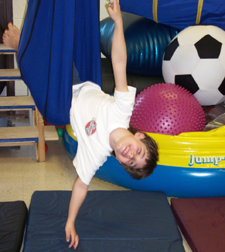
|
Pediatric Occupational, Physical, ABA/Behavioral, Feeding, Speech, and Language Therapies Main Clinic: 931-372-2567 1445 East 10th Street Cookeville, TN 38501 Email: [email protected] HIPAA Secure Email: [email protected] Fax: (931) 372-2572 ABA Clinic: 931-201-9534 400 Dubois Road Cookeville, TN 38501 Email: [email protected] Please call today to get started! Most insurances accepted! |

|
| Who needs therapy? | SE HABLA ESPAÑOL |
Vision: A Learning Connection
What happens when there are visual issues undetected in a child? This child frequently avoids activities like: reading, handwriting and fine motor activities, may rub their eyes,may tilt their head a lot, and/or have great difficulty with eye hand coordination.
They fuss, whine, and avoid near work. You may seek tutoring, but this does not treat the real issue.
When you have a vision screening or your pediatrian gives you the "all clear" this means your child is not "legally blind"
These screenings tell us nothing about the eye muscles and the connections in the brain for visual perceptual skills.
Only Developmental Pediatric Optometrists with a Fellowship (F.C.O.V.D. behind their name) look at the visual perceptual and eye muscle movement parts of vision and learning. Find one near year by searching on: www.covd.org
When the body doesn't register movement appropriately, it is difficult for the brain to send the "endure" message to muscles. This impacts eye muscles also when they are trying to converge and maintain near focus.
Children with low muscle tone in their trunk usually have low tone in their eyes causing great difficulty with enduring near work or copying from the board work.
Think of all the challenges and ways we use vision in the classroom: looking at words on a page and moving all the way across without losing their place for example is crossing midline with the visual system. If the child can't cross midline with their arms and hands, they can't with their eyes. They desperately need this skill in order to understand the left to right movements for handwriting, worksheets and reading!
Other challenges are:
~looking for an assignment on the board amidst so many visual attention grabbers in the classroom
~ refocusing on the paper to write information after looking at the board
~using two eyes together to move through the room without bumping or touching objects
~tying shoes
~eye-hand coordination
~knowledge of letters
For questions or suggestions regarding a visual solution, please contact Dr. Clopton at the Center of Vision 931-372-2020 or email [email protected]
Site empowered by
WebOnTheFly